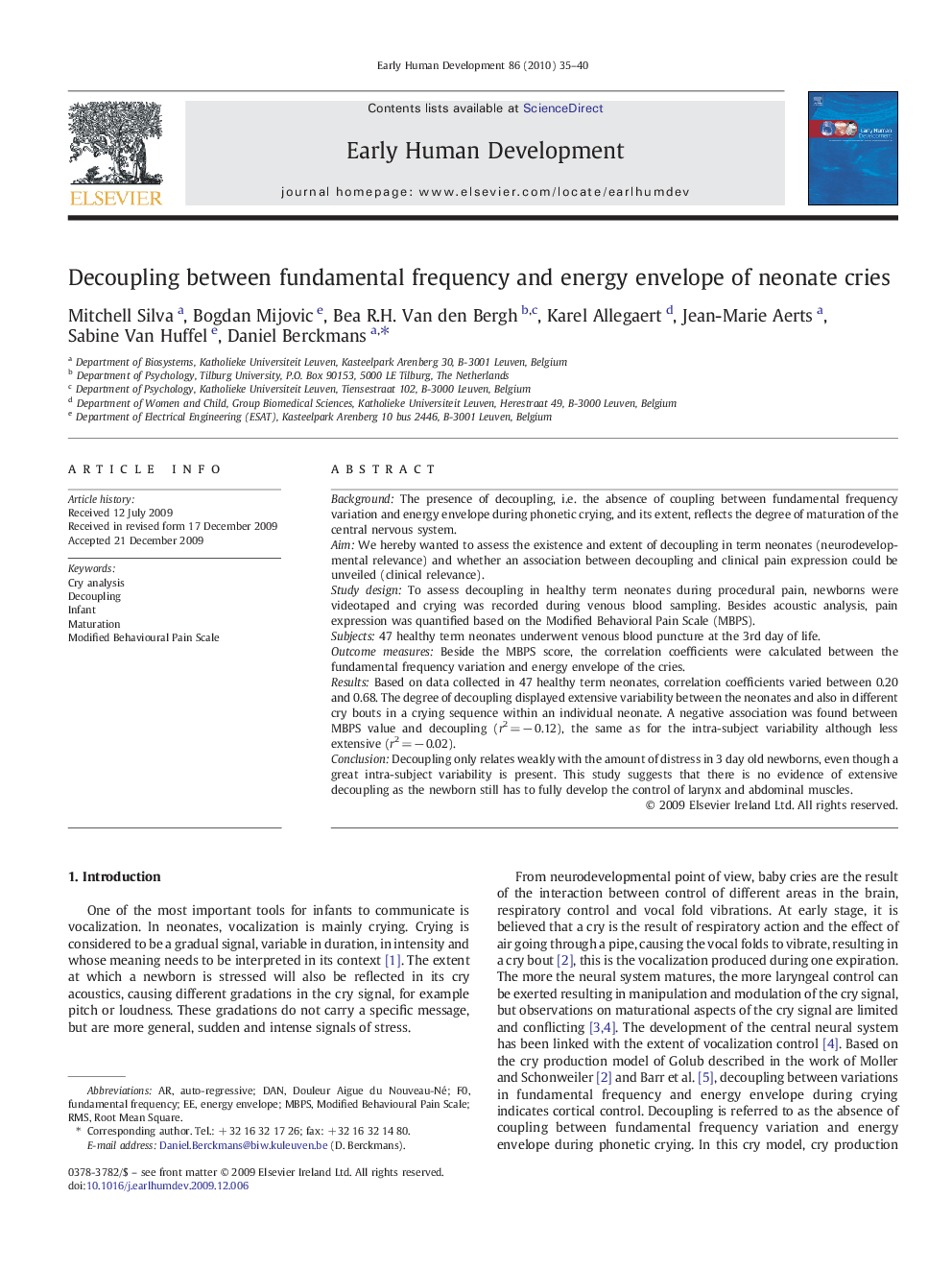| Article ID | Journal | Published Year | Pages | File Type |
|---|---|---|---|---|
| 3918475 | Early Human Development | 2010 | 6 Pages |
BackgroundThe presence of decoupling, i.e. the absence of coupling between fundamental frequency variation and energy envelope during phonetic crying, and its extent, reflects the degree of maturation of the central nervous system.AimWe hereby wanted to assess the existence and extent of decoupling in term neonates (neurodevelopmental relevance) and whether an association between decoupling and clinical pain expression could be unveiled (clinical relevance).Study designTo assess decoupling in healthy term neonates during procedural pain, newborns were videotaped and crying was recorded during venous blood sampling. Besides acoustic analysis, pain expression was quantified based on the Modified Behavioral Pain Scale (MBPS).Subjects47 healthy term neonates underwent venous blood puncture at the 3rd day of life.Outcome measuresBeside the MBPS score, the correlation coefficients were calculated between the fundamental frequency variation and energy envelope of the cries.ResultsBased on data collected in 47 healthy term neonates, correlation coefficients varied between 0.20 and 0.68. The degree of decoupling displayed extensive variability between the neonates and also in different cry bouts in a crying sequence within an individual neonate. A negative association was found between MBPS value and decoupling (r2 = − 0.12), the same as for the intra-subject variability although less extensive (r2 = − 0.02).ConclusionDecoupling only relates weakly with the amount of distress in 3 day old newborns, even though a great intra-subject variability is present. This study suggests that there is no evidence of extensive decoupling as the newborn still has to fully develop the control of larynx and abdominal muscles.
